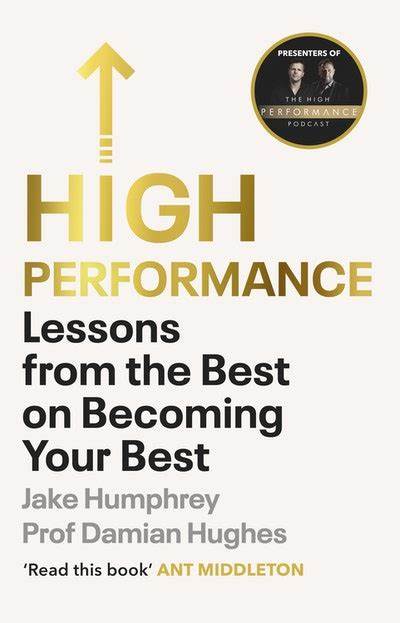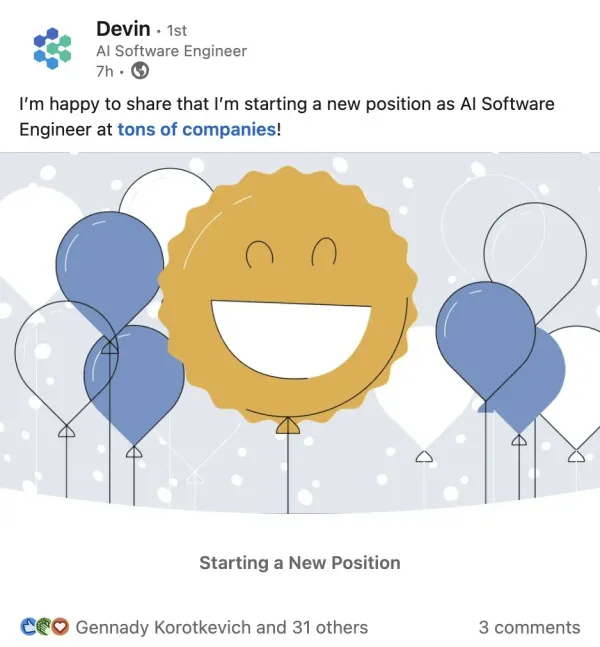High Performance – Jake Humphrey and Damian Hughes

Jake Humphrey and Damian Hughes co-authored the book High Performance, which was published in December 2021. The book draws on interviews from high achievers from the worlds of sport, business, and beyond to provide insights on how to achieve success.
It covers topics such as resilience, focus, and motivation, as well as more practical tips on how to manage time, energy, and relationships. It also contains an exclusive Q&A section with Jake and Damian, answering questions posed by listeners of their podcast.
Get Motivated
While material rewards and social status can drive motivation in the short term, they’re rare enough in the long run. True motivation comes from within.
Internal motivation comes from three sources:
- Autonomy: When your behaviour aligns with your values, it’s easier to get excited about it.
- Competence: We are most motivated when we have control over what we’re doing.
- Belonging: When we feel part of something bigger than ourselves – like a team – we can sustain our motivation for longer.
High Performance is:
Doing the best you can, where you are, with what you have got.
A story about three men who were laying bricks
Each was asked what he was doing. The first said, ‘Laying bricks.’ The second said, ‘Earning £10 per hour.’ The third said, ‘I’m building a cathedral and, one day, I’ll bring my kids back here and tell them that their dad contributed to this magnificent building.’
Alex Ferguson
Motivation is a spectrum
Whenever you’re faced with a task, on a subconscious level you’re grappling with three big factors.
- Demands: What is required of me to do this job? How hard is it?
- Ability: Do I actually have the skills to pull the job? How does it correspond with the things I’m good (and bad) at?
- Consequences: What is actually at stake here? What would getting (or not getting) the job mean for the rest of my life?
We are most likely to remain calm when the demands are low, our ability is high and the consequences are not too significant.
High performance means absolute engagement. You’re either fully attentive and engaged, or you’re not.
3 Big Ideas from High Performance
- The route to high performance is through your strengths.
- High performers are consistent. They have a handful of non-negotiable trademark behaviours – and they stick to them.
- If you wait to build a successful organisation, you need to make your teammates care abo
The Responsibility Equation
When we go through hell, it’s human to look for someone to blame. But blame is useless. All that matters is how we respond. The best performers quickly separate the things that happen to them from their responsibility to react in the most effective way. People who believe they control their fate consistently fare better in life. If you believe you’re in control of your life, you’re more likely to actually end up in control.
This can be summarised into the Responsibility Equation:
L + R = O (Life + Response = Outcome)
It doesn’t matter how big or small the tasks are. It is about following the process – controlling the things I can.
Duncker’s famous experiment: The Candle Problem
He gave a group of students a box of pins, a candle and a matchbook – and told them to find a way to attach the candle to the wall. They were stumped. Some of them attempted to melt the candle to the wall; others experimented with pushing the drawing pins through the wax into the wall, with little success. In fact, there was a simple way to solve the problem: tack the box to the wall and put the candle inside it.
But very few of the participants thought to do so. Why? Duncker thought the answer lay in what he called ‘functional fixedness’. When we see an object, we become fixated on its main function – in this case, the box was holding pins, and so nobody thought that it could hold a candle. This limits our ability to think critically about what is possible.
Find Your Non-Negotiables
High performers are consistent. They have a handful of non-negotiable trademark behaviours – and they stick to them.
A trademark behaviour is one that you commit to unequivocally. When a situation gets tough and everything else disintegrates, these trademark behaviours remain in place. Your commitment to these behaviours, through thick and thin, makes for high performance.
Consistency turns one-time high performers into all-time high performers. The only way to win is through consistency. Consistent messages, consistent behaviours and consistent consequences.
Play To Your Strengths
Lets say your child earns the following grades:
English: A
Social Studies: A
Biology: C
Algebra: F
Maths: C
French: B
Is there a grade that immediately jumps out at you?
Most people focus on the weakest results and underemphasize the strengths.
High Performers focus on their strengths. They use these to improve their weaknesses.
Trademark Behaviours
Trademark Behaviours are:
- Simple
- Impactful
- Clear
The most important behaviours are those that matter in the most intense moments. We can work out our trademark behaviours by asking: When the going gets tough, what is going to make the difference?
Your trademark behaviours should constantly be at the forefront of your mind. They are the simple, crucial, clear rules for what you do – and who you are.
Craft a Culture
How was it that a team of apparently less talented people could do better than a team of ‘stars’?
The answer lay in the power of commitment. In commitment cultures, everyone is on board with what the company is doing, and everyone has a shared set of values and goals. Everyone works harder.
If you want to build a successful organization, you need to make your teammates care about what you’re doing. A high-performance team is a committed team.
A high-performance team is a committed team.
The Letter to yourself
Write yourself a letter dated twelve months from now. This letter should begin with ‘Dear [your name here]’, and it should detail precisely how you achieved a goal that you currently have. This visualization of your success should not include any future tense. Phrases like ‘I hope’, ‘I plan to,” or ‘I will’ are not allowed.
Instead, write the letter as if those accomplishments are all history and that you’re looking back at them from a distance. Be as detailed as possible, and identify the practical steps you took and the decisions that you alone were responsible for.



![Humans + Agents = The Future of Work [Marc Benioff on AgentForce 2.0]](/content/images/size/w600/2024/12/agentforce-marc-benioff.jpg)
